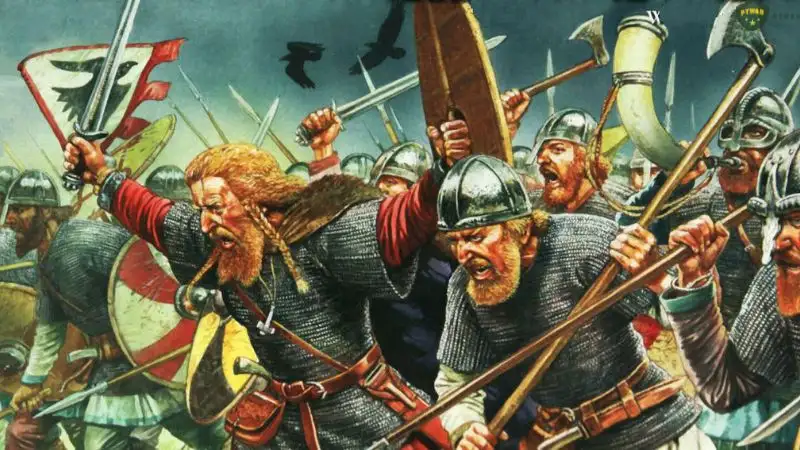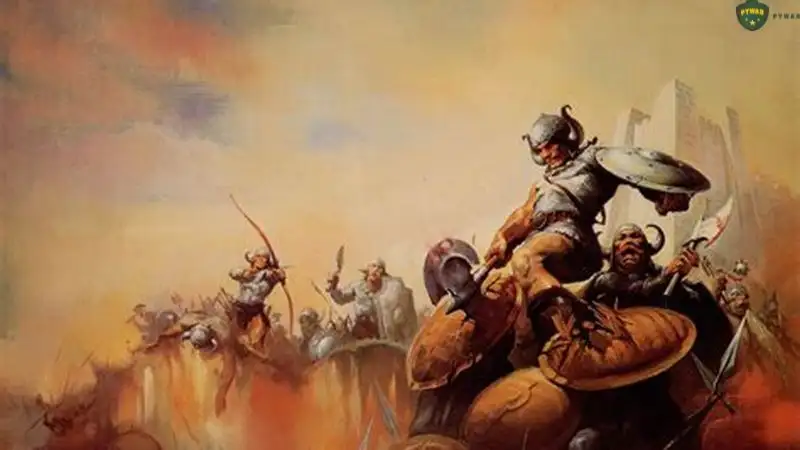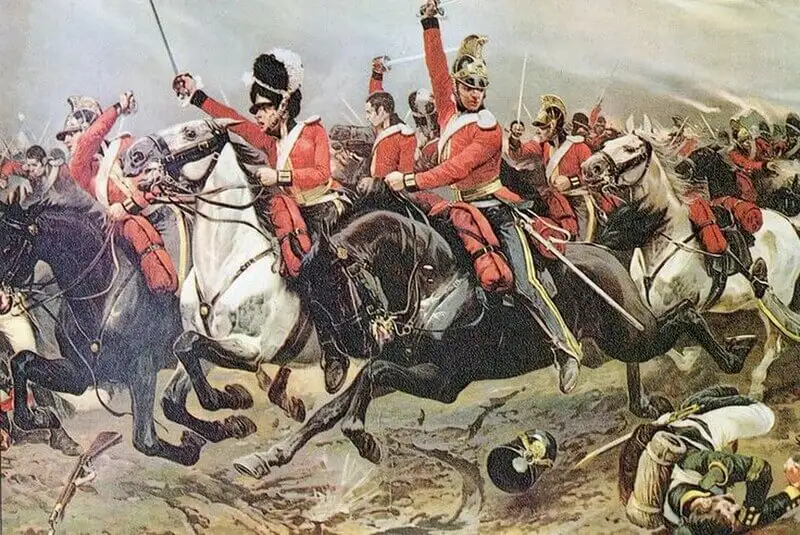The Battle of Clontarf, fought on April 23, 1014, is one of the most iconic and debated events in Irish history. Often romanticized as a decisive victory of the Irish over Viking invaders, this battle was a complex confrontation involving Irish kingdoms, Norse-Gaelic forces, and Viking mercenaries. Led by Brian Boru, High King of Ireland, the battle reshaped the power dynamics of medieval Ireland, weakening Viking influence while highlighting the fractious nature of Irish politics. This article explores the time, date, location, causes, course, casualties, and outcome of the Battle of Clontarf, offering a detailed examination for history enthusiasts and researchers.
Time and Date of the Battle
The Battle of Clontarf took place on Good Friday, April 23, 1014. The fighting began at dawn and continued until sunset, making it a day-long conflict of extraordinary intensity. The date, coinciding with a major Christian holiday, added a layer of symbolic significance, particularly in later accounts that framed the battle as a Christian triumph over pagan forces. The prolonged duration, from sunrise to sunset, underscores the battle’s ferocity, as recorded in contemporary sources like the Annals of Ulster.

Location of the Battle
The battle was fought near Clontarf, a coastal area just north of Dublin on the east coast of Ireland, along the northern shores of Dublin Bay. The exact site is believed to have centered around the weir near the mouth of the River Tolka, close to present-day Ballybough Bridge, extending toward areas like Fairview Park, Marino, and Phibsboro. Known historically as Cluain Tarbh (Plain of the Bull) due to the roaring sound of the sea, the battlefield’s proximity to the coast and the Tolka River played a critical role, particularly as tides affected Viking escape routes. The terrain, bounded by the sea and the river, included sloping plains and higher ground near Tomar’s Wood, where Brian’s forces positioned themselves.
Causes of the Conflict
The Battle of Clontarf was the culmination of political rivalries, dynastic ambitions, and resistance to Viking influence in Ireland. Several interconnected factors led to this monumental clash:
- Brian Boru’s Rise to Power: Brian Boru, of the Dál Cais dynasty, became High King of Ireland in 1002 after decades of consolidating power in Munster. His ambition to unify Ireland’s fractious kingdoms under his rule challenged regional powers, particularly the Kingdom of Leinster and the Norse-Gaelic Kingdom of Dublin. His dominance threatened the autonomy of rivals like Máel Mórda mac Murchada, King of Leinster, and Sigtrygg Silkbeard, King of Dublin.
- Leinster and Dublin Rebellion: By 1013, Máel Mórda and Sigtrygg, whose mother Gormflaith was Brian’s former wife, formed a coalition to resist Brian’s authority. Their rebellion was fueled by personal and political grievances, including Brian’s earlier campaigns against Leinster and Dublin. Sigtrygg sought Viking allies from abroad to bolster his forces, reflecting Dublin’s status as a wealthy Norse trading hub.
- Viking Presence in Ireland: Vikings had been raiding Ireland since the late 8th century, establishing settlements like Dublin by 838. By 1014, the Norse-Gaels of Dublin were deeply integrated into Irish society, with intermarriages and Christian conversions, but their military and economic power remained a point of contention. Brian’s campaigns against Viking strongholds, such as victories at Sulcoit and Bealach Leachta, heightened tensions.
- Dynastic and Regional Rivalries: Ireland in 1014 was not a unified nation but a patchwork of competing kingdoms. Brian’s claim to the High Kingship, traditionally held by the Uí Néill, provoked opposition. Máel Sechnaill mac Domnaill, a former High King and Brian’s sometime ally, reportedly withdrew support before the battle, reflecting the complex alliances and rivalries. The battle was as much an Irish civil war as a conflict with foreign Vikings.
These factors converged in 1013–1014, as Brian mobilized his forces to crush the Leinster-Dublin rebellion, leading to the showdown at Clontarf.
Course of the Battle
The Battle of Clontarf was a brutal, day-long engagement involving thousands of warriors from diverse regions. Brian Boru’s army, primarily from Munster and supported by allies from Connacht and other areas, faced a coalition of Leinster forces, Dublin’s Norse-Gaels, and Viking mercenaries from Orkney, the Isle of Man, and beyond, led by Sigurd of Orkney and Brodir of Mann. The battle unfolded as follows:
Prelude and Positioning
In the winter of 1013, Brian rallied his forces, including the Dál Cais and allies like Tadhg Mór O’Kelly of Uí Maine, camping near Kilmainham outside Dublin. His army plundered Fine Gall and Howth to weaken Dublin’s resources. The Leinster-Dublin coalition, reinforced by Viking ships landing at Clontarf Strand, assembled north of the River Liffey. Sigtrygg remained in Dublin with a reserve force, watching from the city walls with his wife Sláine, Brian’s daughter. The Viking fleet, under Brodir, arrived at high tide around 5:30 AM, anchoring near Clontarf Weir.
The opposing forces formed distinct lines. Brian’s army, led by his son Murchad, occupied higher ground near Tomar’s Wood in Phibsboro, with warriors from Munster, Connacht, and possibly Meath (though Máel Sechnaill’s participation is debated). The enemy coalition deployed in three main divisions: foreign Vikings under Brodir and Sigurd in the front, Dublin Norsemen under Dubgall mac Amlaíb, and Leinstermen under Máel Mórda at the rear.
The Battle
Fighting began at dawn on April 23, 1014, with intense clashes across the plains between the Tolka River and Dublin Bay. The Cogad Gáedel re Gallaib, a 12th-century account, describes the battle as exceptionally bloody, with Viking berserkers in mail armor wielding axes against Irish warriors armed with swords and spears. Murchad led a fierce charge, reportedly killing Sigurd of Orkney, though he himself was later slain. The fighting was most intense at the “Battle of the Fishing Weir” near the Tolka’s mouth, where the terrain funneled the combat.

As the day progressed, Brian’s forces gained the upper hand, pushing the Viking-Leinster coalition toward the sea. A critical turning point came in the late afternoon when the tide rose around 5:55 PM, carrying Viking ships out of reach and trapping retreating warriors. Many Vikings drowned while attempting to flee, including Brian’s grandson Toirdelbach, who pursued enemies into the sea and was swept against the weir. Survivors fleeing toward Dublin were ambushed at Dubgall’s Bridge (near Ballybough), where most were massacred.
Brian’s Death
Brian, aged 73 and too old to fight, remained in his tent praying. According to the Cogad, a fleeing Viking, Brodir of Mann, stumbled upon Brian’s tent and killed him. Brodir was subsequently captured and executed, possibly by Ulf the Quarrelsome, in a gruesome manner. The deaths of Brian, Murchad, and Toirdelbach marked a tragic loss for the Dál Cais, despite their victory.
Aftermath
By sunset, the Viking-Leinster forces were routed, with surviving Norsemen either drowned or slaughtered. Sigtrygg retained control of Dublin, but his power was significantly diminished. The battle’s immediate aftermath saw Brian’s son Donnchad mac Briain rally the Dál Cais back to Munster, facing renewed challenges from rivals like the Eóganacht.
Casualties
The Battle of Clontarf was exceptionally bloody, even by medieval standards, with estimates of 7,000 to 10,000 total deaths. Brian’s forces suffered approximately 4,000 casualties, including key leaders like Murchad, Toirdelbach, and Brian himself, as well as his nephew Conaing. The Viking-Leinster coalition lost around 6,000 men, including Máel Mórda, Sigurd of Orkney, Brodir of Mann, and Dublin leaders like Dubgall mac Amlaíb and Gilla Ciaráin mac Glún Iairn. The high casualty rate, particularly among the elite, underscored the battle’s scale and its impact on both sides.
Who Won the Battle of Clontarf?
The Battle of Clontarf was a pyrrhic victory for Brian Boru’s forces. His army, led by the Dál Cais and their allies, decisively defeated the Viking-Leinster coalition, breaking the military power of Dublin and its Norse allies. The rout of the enemy, with many drowning or massacred during their retreat, marked a significant setback for Viking ambitions in Ireland. However, the victory came at a tremendous cost: Brian, his son Murchad, and grandson Toirdelbach were killed, creating a succession crisis that weakened Munster’s dominance.

Sigtrygg Silkbeard, though defeated in the field, retained control of Dublin until 1036, but the city’s influence as a Norse power declined significantly. The battle is often seen as a turning point, reducing Viking military dominance while reinforcing Irish resistance, though it did not end Norse presence in Ireland.
Conclusion
The Battle of Clontarf, fought on April 23, 1014, remains a landmark in Irish history, symbolizing both triumph and tragedy. Driven by Brian Boru’s ambition to unify Ireland and resistance from Leinster and Dublin’s Norse-Gaels, the battle was a complex clash of Irish and Viking forces, not a simple native-versus-foreign conflict. The day-long struggle near Dublin Bay, marked by intense fighting and strategic use of terrain, resulted in a costly victory for Brian’s forces, weakening Viking power but at the expense of his life and dynasty.
The heavy casualties—estimated at 7,000–10,000—reflect the battle’s ferocity, immortalized in works like the Cogad Gáedel re Gallaib. While later accounts mythologized Clontarf as a Christian triumph over pagan Vikings, modern historians view it as an Irish civil war with lasting cultural and political impacts. For those exploring Ireland’s past, Clontarf offers a compelling study of leadership, conflict, and the interplay of cultures that shaped medieval Ireland.




